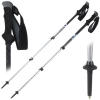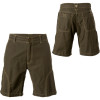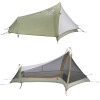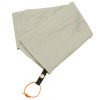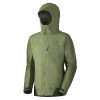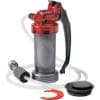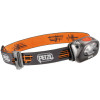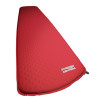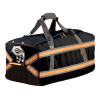As per the main Pemi Loop TR, here is the ski beta companion post. If you are not interested in backcountry skiing, this is probably a good post to skip: it’s pretty dry and in essence just a bunch of maps and weird photos. At the risk of providing too much detail (not sure if that’s possible for this topic), each entry will follow this general format:
- Quick textual blurb about what we’re looking at.
- Photos – these are the main artifacts that we took away from the whole thing.
- Google Earth View – I’ve tried to highlight the regions of interest and panned to a view similar to that shown in the photo(s).
- Topo Map – Same highlighting; more informative for those actually trying to hike / skin / walk there with the aid of a map, compass, or GPS.
- Satellite Map – These actually give you a better idea of where the skiable part is.
- Additional Photos, etc…
And without further ado…
View Pemi Loop in a larger map
View Pemi Loop in a larger map
View Pemi Loop in a larger map
West Bond and Bondcliff
Bondcliff is tempting for obvious reasons, but it’s questionable at best. It’s extremely steep and all of the crazy terrain features would require a stupendous amount of snow to fill it in. It’s northwest facing, so it probably get’s blasted but upslope weather, but may well get scoured by the prevailing winds. I think the more promising looking runs are actually on West Bond.
View Pemi Loop in a larger map
View Pemi Loop in a larger map
View Pemi Loop in a larger map
Osceola and Scar Ridge Slides
These are actually not in The Pemi, their across the Kancamagus just east of Loon. I hear they slide left and right but if appropriate conditions could be found, they look like fun. These slides are roughly a mile from the highway and each of them drains out into the Hancock Branch of the Pemi River which runs parallel to the Kanc, so access is pretty straight forward.
View Pemi Loop in a larger map
View Pemi Loop in a larger map
View Pemi Loop in a larger map
|
View Pemi Loop in a larger map |
View Pemi Loop in a larger map |
|
View Pemi Loop in a larger map |
View Pemi Loop in a larger map |
View Pemi Loop in a larger map
View Pemi Loop in a larger map
View Pemi Loop in a larger map
View Pemi Loop in a larger map
View Pemi Loop in a larger map
View Pemi Loop in a larger map
View Pemi Loop in a larger map
View Pemi Loop in a larger map
View Pemi Loop in a larger map
View Pemi Loop in a larger map
Lincoln Slides – East Slope
The east slope of Franconia ridge has several nice looking runs however, there’s no easy way of getting to them. The shortest route may be to climb the west side of Lincoln, and then simply ski down the west side. Of course then you need to get back. Additionally, conventional wisdom dictates that you climb the line you’re going to ski. The safer route involves a 5 or 6 mile slog through The Pemi over easy terrain, followed by some bushwhacking to get to the base of the slides. Yet another alternative, would be to follow Lincoln Brook, possibly skinning up it all the way to the bottom of the drainage. This is more direct than following the Franconia Brook Trail, but may not be faster due to the comparative slowness of bushwhacking on skis. The north aspect of these slides is wide and relatively mellow, however punctuated by lots of passenger car sized boulders, which should make for good fun on a powder day. The south aspect is considerably steeper and narrower – an exciting looking technical line. The photo we got is actually not a great perspective (I think the sun was starting to get to me…), so really rely on the maps to see what’s going on here.
View Pemi Loop in a larger map
View Pemi Loop in a larger map
View Pemi Loop in a larger map
Lafayette Slides
These look gnarly and could be accessed without any sort of bushwhacking at all, although the fastest route would almost certainly be to take the Old Bridle Path to the base of the drainage and just follow it up from there.
View Pemi Loop in a larger map
View Pemi Loop in a larger map
View Pemi Loop in a larger map
